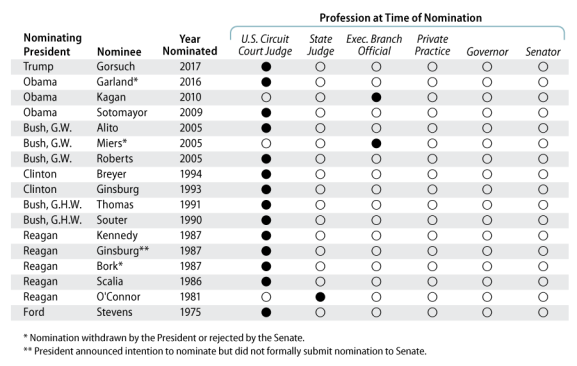Figure 1. Type of Professional Experience at Time of Nomination
(1975-Present)

Source: Congressional Research Service
On June 27, 2018, Justice Anthony Kennedy, after serving on the Supreme Court as an Associate Justice since 1988, announced his intention to retire from the U.S. Supreme Court. Justice Kennedy indicated that his retirement would be effective July 31, 2018. This Insight provides an overview of several issues related to the selection of a nominee by a President for a vacancy on the Court. For additional information and analyses on these and other issues, see CRS Report R44235, Supreme Court Appointment Process: President's Selection of a Nominee.
The Role of Senate Advice
When a vacancy occurs on the Supreme Court, it becomes the President's constitutional responsibility to select a successor to the vacating Justice, as well as the constitutional responsibility of the Senate to exercise its role in providing "advice and consent" to the President. Constitutional scholars have differed in how much importance the Framers of the Constitution attached to the word "advice" in the phrase "advice and consent." Historically, the degree to which Senate advice has been sought or used has varied, depending on the President.
It is a common, though not universal, practice for Presidents, as a matter of courtesy, to consult with Senate party leaders as well as with members of the Senate Judiciary Committee before choosing a nominee. Presidents have also traditionally consulted with a candidate's home state Senators, especially if they are of the same political party as the President.
Criteria for Selecting a Nominee
While the precise criteria used in selecting a Supreme Court nominee vary from President to President, two general motivations appear to underlie the choices of almost every President. One is the desire to have the nomination serve the President's political interests (in the partisan and electoral senses of the word "political," as well as in the public policy sense); the second is to demonstrate that a search was successfully made for a nominee having the highest professional qualifications. Other criteria might include a nominee's reputation for integrity and impartiality, demographic considerations, and the personal qualities of the nominee.
Figure 1 shows, from 1975 to the present, the type of professional position or occupation held by an individual at the time of his or her nomination to the U.S. Supreme Court. Since 1975, the most common type of profession at the time of an individual's nomination has been service as a circuit court judge—14, or 82%, of 17 nominees fall into this category. Note, though, that during the post-war period prior to 1975 (i.e., from 1945 through 1974) it was less common for a nominee to have been serving as a circuit court judge at the time of nomination. Of the 20 nominees during this earlier period, 9, or 45%, were serving as circuit court judges when nominated. See Figure 1 in CRS Report R44235 for additional historical details.
|
Figure 1. Type of Professional Experience at Time of Nomination (1975-Present) |
 |
|
Source: Congressional Research Service |
Speed by Which a President Selects a Nominee
When a vacancy occurs on the Court, there is variation in how quickly a President selects a nominee. Factors that might affect the speed by which a nominee is selected include whether a President has advance notice of a Justice's decision to retire; whether a President has a strong personal preference for a particular individual; and when a vacancy occurs during the calendar year.
Figure 2 shows the number of days that elapsed between the date on which it was publicly known that a Justice was leaving the Court and the date on which the President publicly identified a nominee to replace the departing Justice.
Note that the figure only shows those vacancies on the Court since 1975 for which a single nomination was made for the vacancy to be filled. So, for example, the vacancy created in 2016 by the death of Justice Antonin Scalia is not included in Figure 2 (since, when it was filled, two nominations had been made to fill it). Since 1975, there have been three vacancies on the Court, including the Scalia vacancy, for which more than one nomination was made prior to the vacancy being filled. See pp. 17-18 in CRS Report R44235 for additional information on these particular vacancies.
When a Justice steps down from the Court (or announces his or her intention to do so), Presidents sometimes move quickly, selecting their nominee within a week of the vacancy being announced. Presidents Reagan and George H. W. Bush, for instance, selected most of their Supreme Court nominees within days of the vacating Justices publicly announcing their retirements from the Court. Similarly, President George W. Bush moved swiftly in selecting a nominee to succeed Chief Justice William H. Rehnquist, announcing his choice of John G. Roberts Jr. for that office two days after the death of Chief Justice Rehnquist.
President Clinton, in contrast, took more time in selecting his two Supreme Court nominees, nominating Ruth Bader Ginsburg nearly three months after the retirement announcement of Justice Byron R. White, and nominating Stephen G. Breyer approximately five weeks after the retirement announcement of Justice Harry A. Blackmun.
Most recently, two of President Obama's Supreme Court selections were made within approximately one month of an incumbent Justice departing the Court. He selected Sonia Sotomayor 25 days after Justice David Souter announced he was leaving the Court, and selected Elena Kagan 31 days after Justice John Paul Stevens announced his retirement.